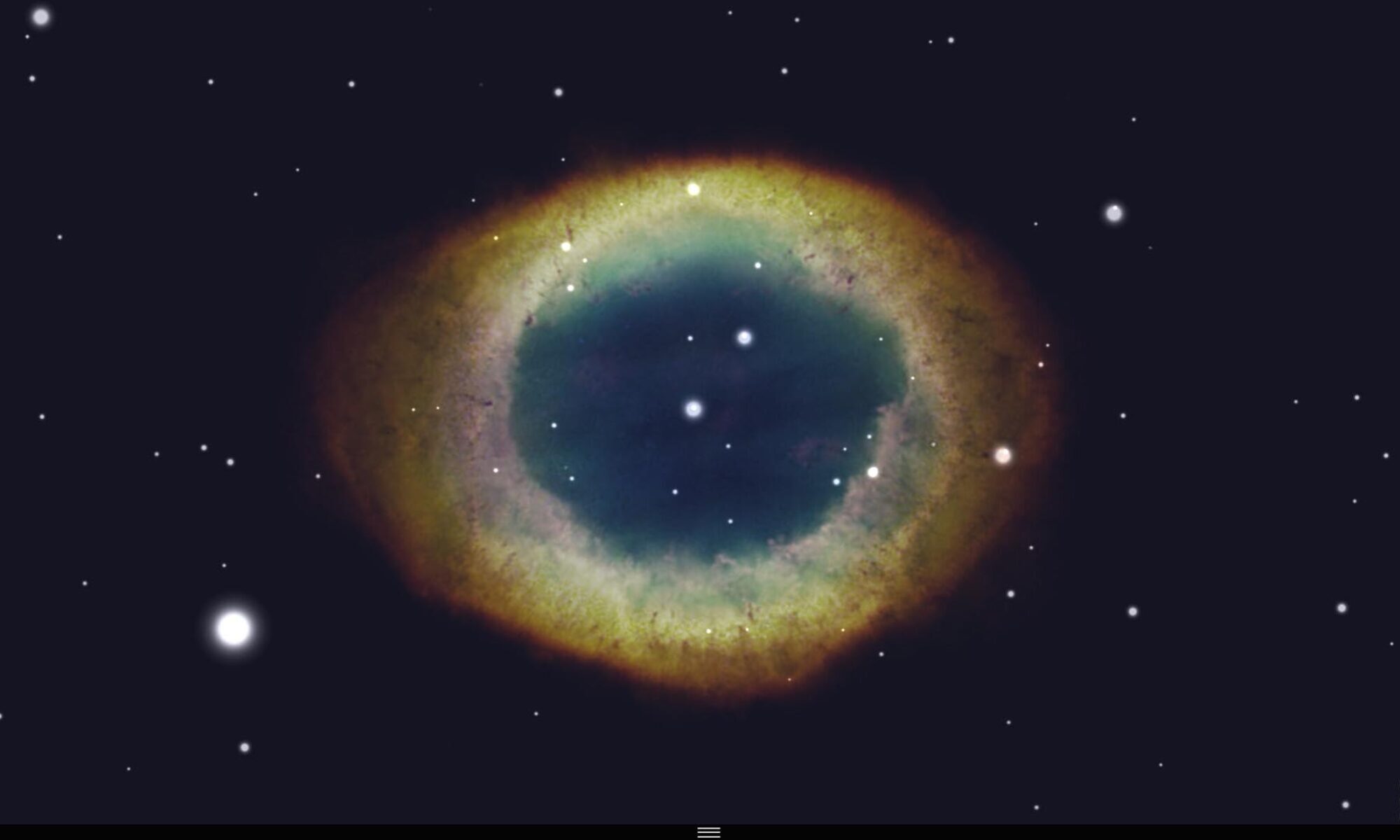The latest version of WinStars focuses on comets and asteroids, representing them as accurately as possible.
To achieve this, WinStars 3 queries the 3d-asteroids.space database when the user gets closer to one of these objects and retrieves the corresponding 3D model if it is available.
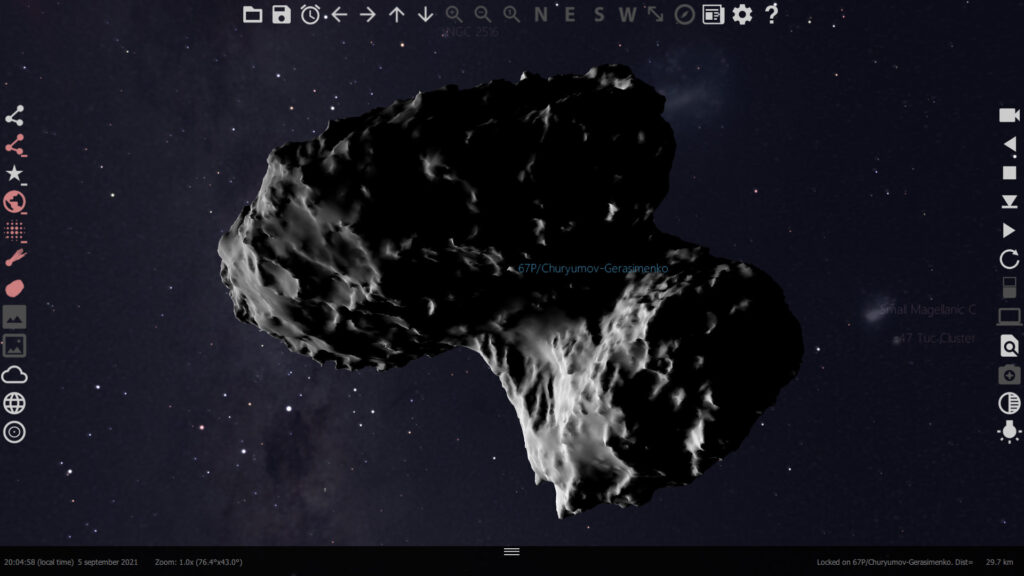
Orbiting the Sun, comets and asteroids provide us with valuable information about the constitutive elements of planets. Having presumably evolved little since their formation 4.6 billion years ago, they appear as distant remnants of the primordial nebula that gave birth to our solar system. For this reason, these small celestial bodies have increasingly attracted the attention of scientists over the past few decades, who have developed numerous techniques to learn about their physical characteristics (shape, configuration, surface, geology, rotation period, etc.). Of course, there have been some interplanetary missions that have allowed us to approach them (such as Galileo, NEAR Shoemaker, Dawn, or Rosetta), but these missions are far too complex and costly to consider exploring the 390,000 asteroids cataloged so far in this way.
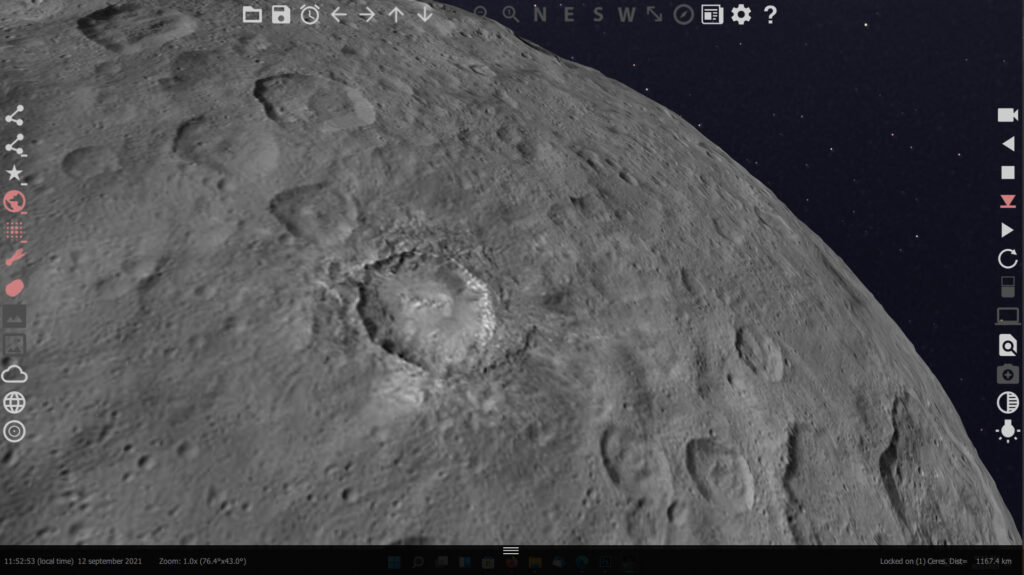
Also, when one of these objects is located less than two million kilometers from Earth, it is sometimes possible to use powerful radio telescopes to image its surface and determine its size, morphology, rotation speed, and whether or not it is accompanied by one or more small satellites.
This is how asteroid 2021 PJ1 was observed on August 14, 2021, with the 70-meter antenna of the Deep Space Network located in Barstow, California. And it is with the Arecibo radio telescope that most radar imaging studies have been conducted, reaching a catalog of a thousand objects today.
However, the photometric method of light curves is most commonly used. Asteroids have such modest diameters (< 1000 km) that it is impossible to resolve them optically with the largest ground-based telescopes. But by observing variations in brightness of asteroids over about ten hours, one can mathematically reconstruct the object’s geometry and determine its rotation period. These light curves, which show minima and maxima as well as periods, provide clues about an elongated or spherical shape, surface irregularities, the presence of large craters, or the existence of a companion.
To complete this presentation, I can only recommend reading two articles by Stéphane Fauvaud on this subject, which you will find at the bottom of the page. I had the pleasure of accompanying him to the Pic du Midi observatory over the past ten years on missions to establish these light curves. Some of them now allow us to reproduce in 3D several asteroids present in W3.
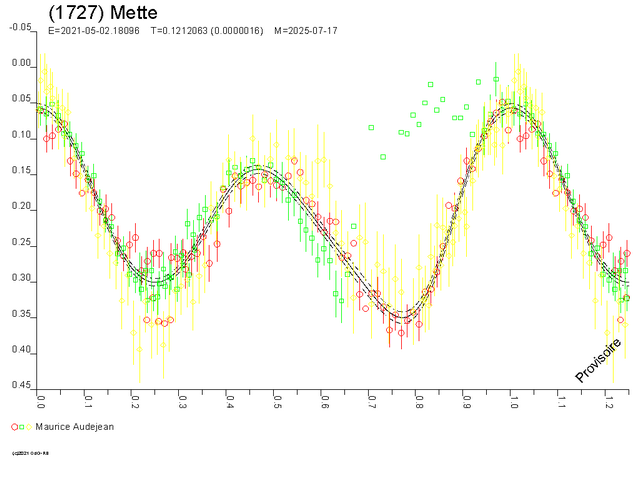 For the time being, only objects with a number < 100 are represented in 3D in the paid version.
For the time being, only objects with a number < 100 are represented in 3D in the paid version.
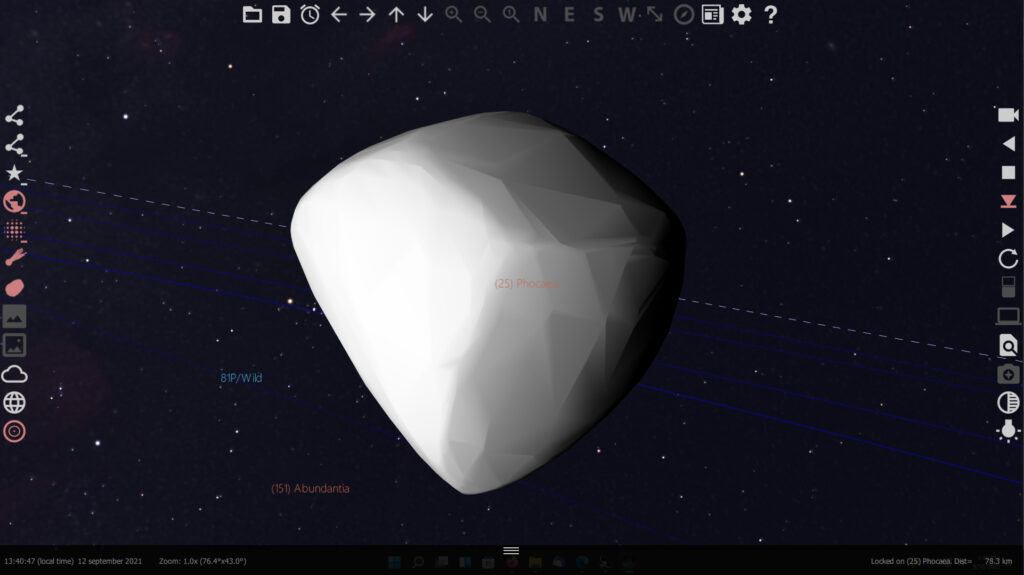
- Properties of slowly rotating asteroids from Convex Inversion Thermophysical Model.
- VLT/SPHERE imaging survey of the largest main-belt asteroids:
Final results and synthesis : aa41781-21
